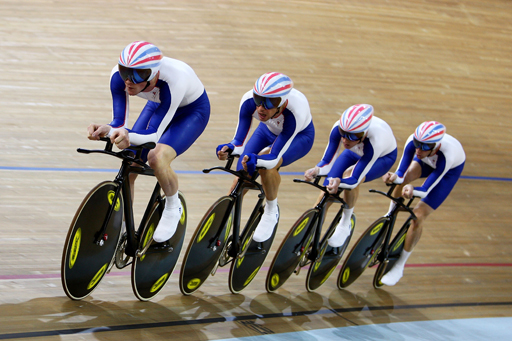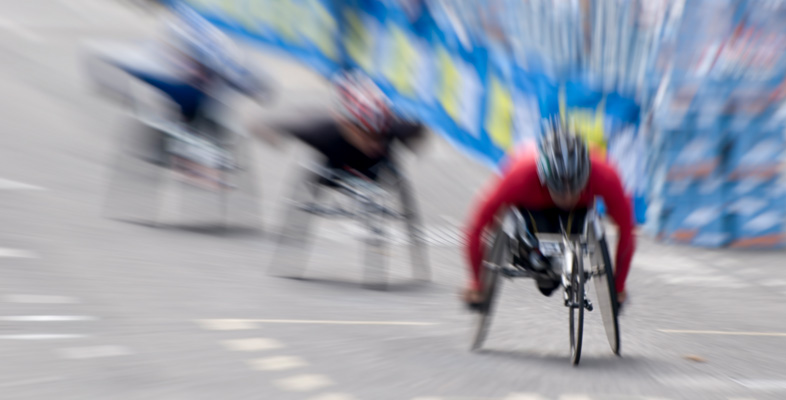5.2 How does this science help us understand wheeled sports?
The science that we introduced in previous units (force, acceleration, speed, etc.) can be used to understand many aspects of wheeled sports. You could, for example, use that science to analyse the speed of a wheelchair athlete in a race, the changes in speed as cyclists pass each other on a track, and even the influence of gravity and reaction forces on cyclists riding on the banked track of a velodrome.
The science introduced in this course enables us to understand several specific aspects of wheeled sports.
You saw that in track races, cyclists exploit aerodynamics to reduce air resistance by riding directly behind each other. In road races involving large groups of cyclists, the tactics of individual riders and teams are strongly affected by the advantage that is gained by competitors who don't ride at the front of the group. You also saw that aerodynamics also affects the posture of wheelchair athletes and the design of their wheelchairs.
Understanding the structure of materials, and their resulting properties, allows us to appreciate the improvements in bicycle and wheelchair design and the effect of this on athletes' performance in events. The explanation of carbon-fibre materials helps us understand more about cycling and also more about other sports where equipment made from carbon fibre plays an important role.

